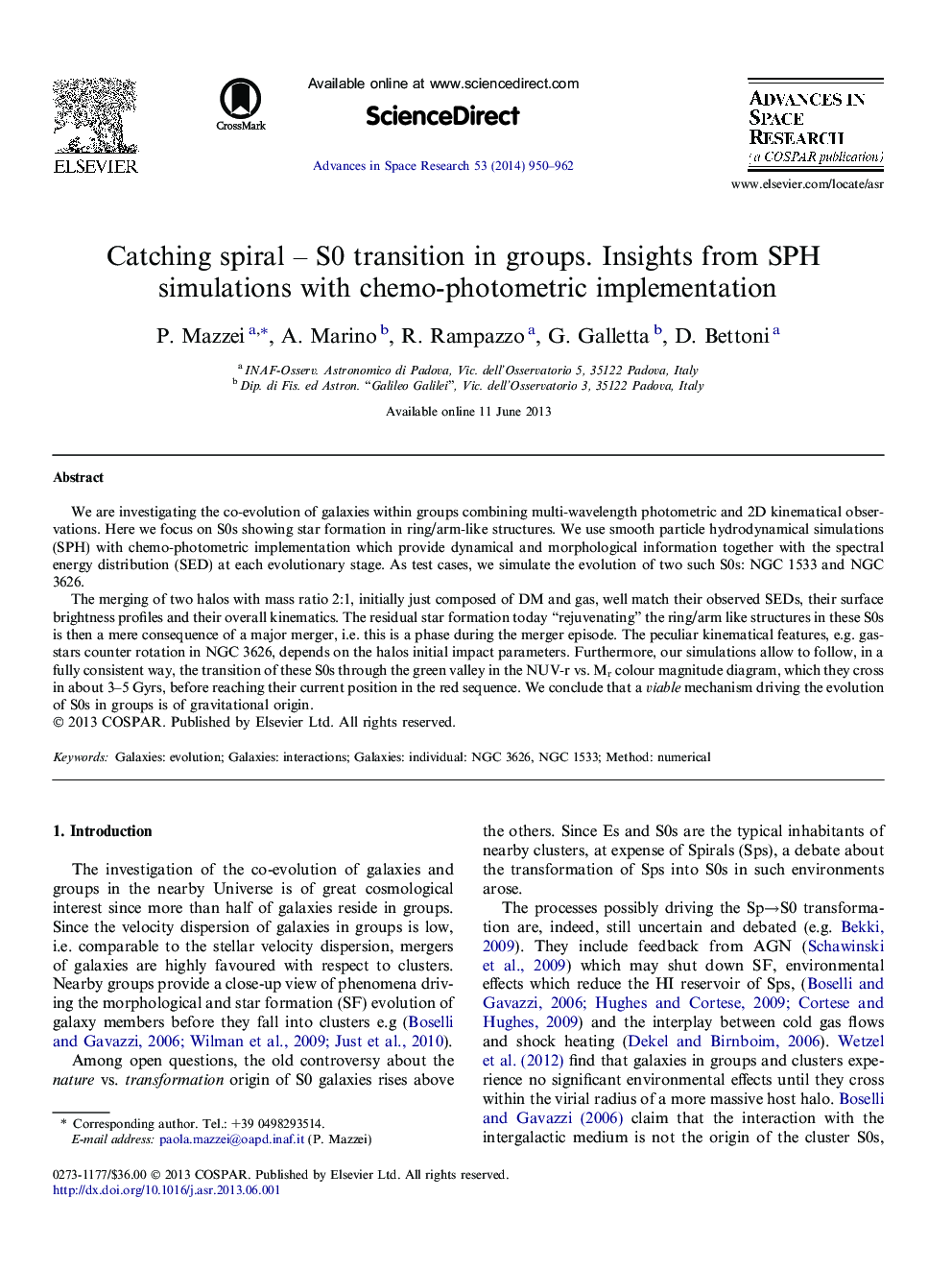| Article ID | Journal | Published Year | Pages | File Type |
|---|---|---|---|---|
| 10694439 | Advances in Space Research | 2014 | 13 Pages |
Abstract
The merging of two halos with mass ratio 2:1, initially just composed of DM and gas, well match their observed SEDs, their surface brightness profiles and their overall kinematics. The residual star formation today “rejuvenating” the ring/arm like structures in these S0s is then a mere consequence of a major merger, i.e. this is a phase during the merger episode. The peculiar kinematical features, e.g. gas-stars counter rotation in NGC 3626, depends on the halos initial impact parameters. Furthermore, our simulations allow to follow, in a fully consistent way, the transition of these S0s through the green valley in the NUV-r vs. Mr colour magnitude diagram, which they cross in about 3-5Â Gyrs, before reaching their current position in the red sequence. We conclude that a viable mechanism driving the evolution of S0s in groups is of gravitational origin.
Related Topics
Physical Sciences and Engineering
Earth and Planetary Sciences
Space and Planetary Science
Authors
P. Mazzei, A. Marino, R. Rampazzo, G. Galletta, D. Bettoni,
